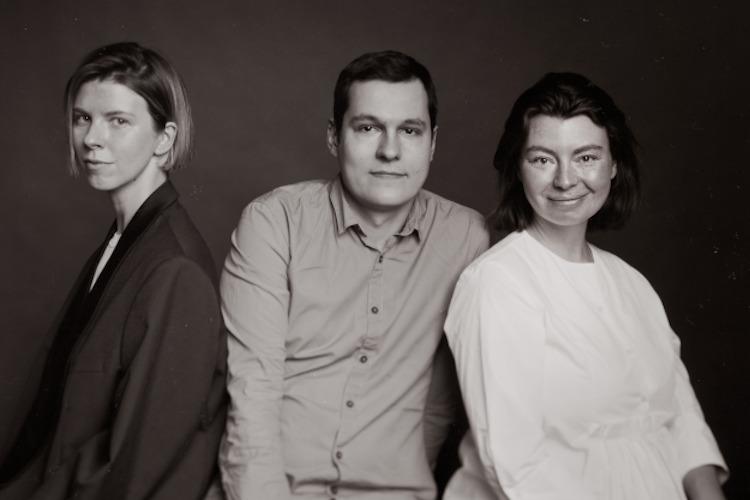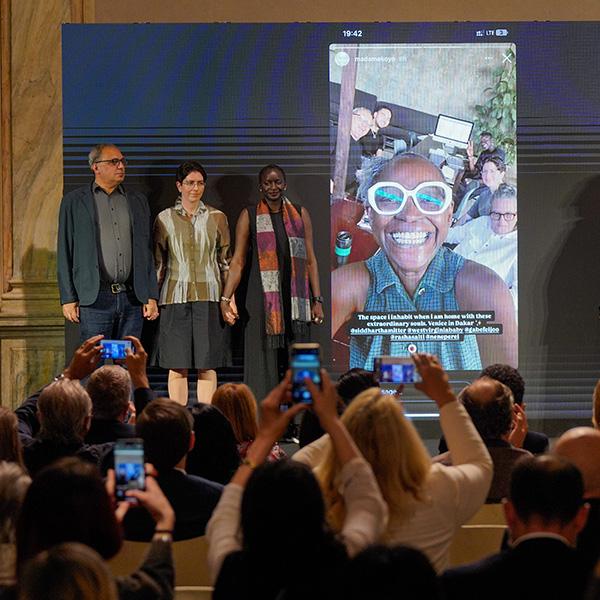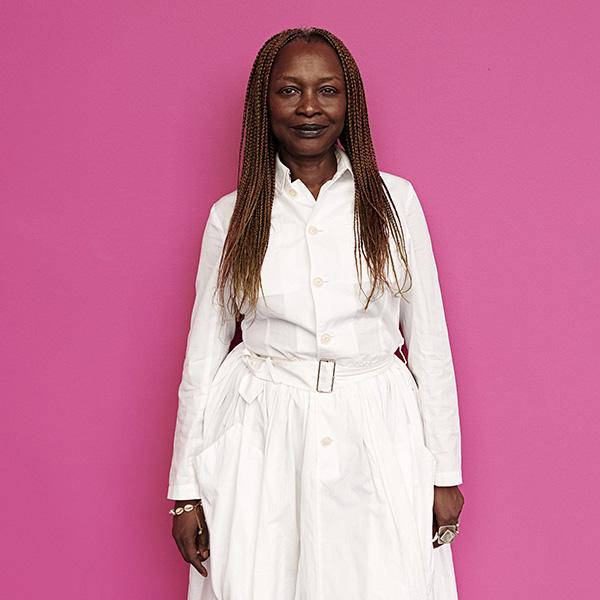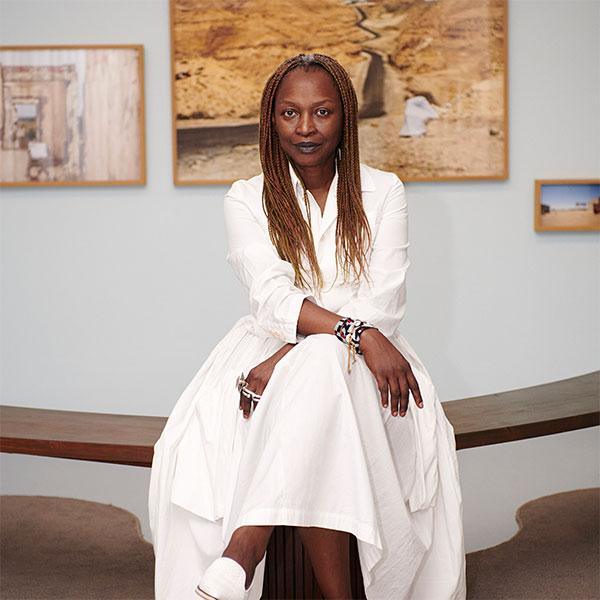
La Biennale di Venezia presents Piazza Ucraina (Giardini della Biennale, Spazio Esedra)
An installation by the curators of the Ukrainian Pavilion Borys Filonenko, Lizaveta German, Maria Lanko. Realized in the context of the Biennale Arte 2022 with the collaboration of the Ukrainian Emergency Art Fund (UEAF) and the Victor Pinchuk Foundation.
Piazza Ucraina
La Biennale di Venezia presents Piazza Ucraina, by the curators of the Ukrainian Pavilion Borys Filonenko, Lizaveta German, Maria Lanko. Realized in the context of the 59th International Art Exhibition with the collaboration of the Ukrainian Emergency Art Fund (UEAF) and the Victor Pinchuk Foundation, Piazza Ucraina is an open-air installation at the Giardini of La Biennale, designed by Ukrainian architect Dana Kosmina.
The aim of this project is giving a voice to artists and the art community of Ukraine as well as other countries in solidarity with the people of Ukraine in the aftermath of the brutal invasion by the Russian government, and to create a space for debate, conversation and support to Ukrainian culture.
Roberto Cicutto
The President of La Biennale, Roberto Cicutto, stated: “From September to November 2020, La Biennale di Venezia presented the exhibition titled The Disquieted Muses. When La Biennale di Venezia Meets History in the Central Pavilion of the Giardini; the aim was to highlight those moments when historical events have burst into the most important art exhibition in the world. Unfortunately, those were not unique cases: the 59th Exhibition curated by Cecilia Alemani is now faced with the Russian aggression against Ukraine. Regarding the outbreak of the war, La Biennale’s reaction was immediate: our Institution gave support to the artist and the curators by having them presenting their work so that we can all be witnesses of their own experience. To confirm once again the collaboration between our Institution and the Ukrainian ones, the curators have come together: Cecilia Alemani and the curators of the Ukrainian Pavilion have designed Piazza Ucraina, a space dedicated to Ukrainian artists and their resistance to the aggression. We hope that this initiative will help raise awareness in the world against the war and all that comes with it.”
Cecilia Alemani
“In times of brutal wars like the one Ukraine is currently living under – said Cecilia Alemani, Curator of the 59th International Art Exhibition – it seems almost impossible to think about art. But perhaps what the long history of La Biennale has taught us is that this Institution can function as a space of conversation, a piazza where dialogue can continue, and where art can serve as a tool to challenge the very notion of national identity and politics. In its 127 years of existence, La Biennale has registered the shocks and revolutions of history like a seismographer. Our hope is that with Piazza Ucraina we can create a platform of solidarity for the people of Ukraine in the earth of the Giardini, among the historical pavilions that were built on the very ideal of nation-state, shaped by twentieth century geopolitical dynamics and colonial expansions.”
Curatorial statement
by Borys Filonenko, Lizaveta German, Maria Lanko
Piazza Ucraina is a place of solidarity with Ukraine in the very heart of the International Exhibition, created by the team of the Pavilion of Ukraine in dialogue with and upon invitation of La Biennale and Cecilia Alemani. The Russian-Ukrainian war, which started in 2014, entered a phase of a full-scale military invasion on 24 February 2022. At 5 am, after the first volleys of air defense, the life of the whole European country changed. So did the lives of every single citizen of Ukraine, artists included. Army service, volunteering, cultural diplomacy, keeping diaries are just some of the social and private practices Ukrainian artists are engaged in today. Most of them have stopped studio work, some continue to combine artistic activities with military and social life, others keep producing artworks almost on a daily basis. For the latter, consistent work helps to make it through the hell of daily newsfeed updates and harsh war reality around. But not only. Shortly after a new piece is completed, whether it’s a drawing, a photograph, a comic strip or a short text, it goes public — via social media. Becoming a subject of the public realm, these works turn into something bigger. They become an evidence, an artifact, a document of the state of mind. Perhaps, these works have already gained a status of the most sincere and certainly undeniable documentation of the experience: the one of trauma, of anger and, yet, of sheer courage, too. Ukrainian users of popular social networks gather around these artworks virtually, exchange thoughts, and create new narratives. Together, these sequences of artworks create a sort of agora, a meeting point, a piazza.
Piazza’s space was created by Dana Kosmina, artist and architect, and embodies a balance of stability and fluidity. This place has a centre and a regular structure, but it is a constantly changing exhibition, where posters are layered on each other, and conversations about the urgent state of the world before and after the war are continuously updated. Piazza Ucraina is built around a monument tightly covered with sandbags — a reference to the widespread wartime practice in Ukrainian cities of protecting public art from shelling.
The Wartime Art Archive was compiled by the Ukrainian Emergency Art Fund (UEAF) team. Ukrainian Emergency Art Fund is a foundation to support artists and cultural workers during the war and afterwards. It was established by MOCA NGO together with independent media Zaborona, The Naked Room gallery and cultural institution Mystetskyi Arsenal. The fund accumulates charity resources, information on available programs, and other opportunities of Ukrainian and foreign institutions to support Ukrainian independent artists, curators, art managers, researchers and non-governmental cultural initiatives. Learn more and donate at https://ueaf.moca.org.ua.
Wartime art is also another answer to the three questions of Cecilia Alemani, offered in the statement of The Milk of Dreams. Artists in Ukraine and Ukrainian artists outside the country are experiencing human change. And together with this experience, they have their own vision of the human body and its metamorphosis, the relationship between individuals and technologies, between the body and the Earth. For months, human bodies have been shaking along with the walls of their homes and cities. Every day technologies kill and protect also. Every day, human relationships with plants, animals, earth and non-humans change or strengthen, and this is not a dream.






